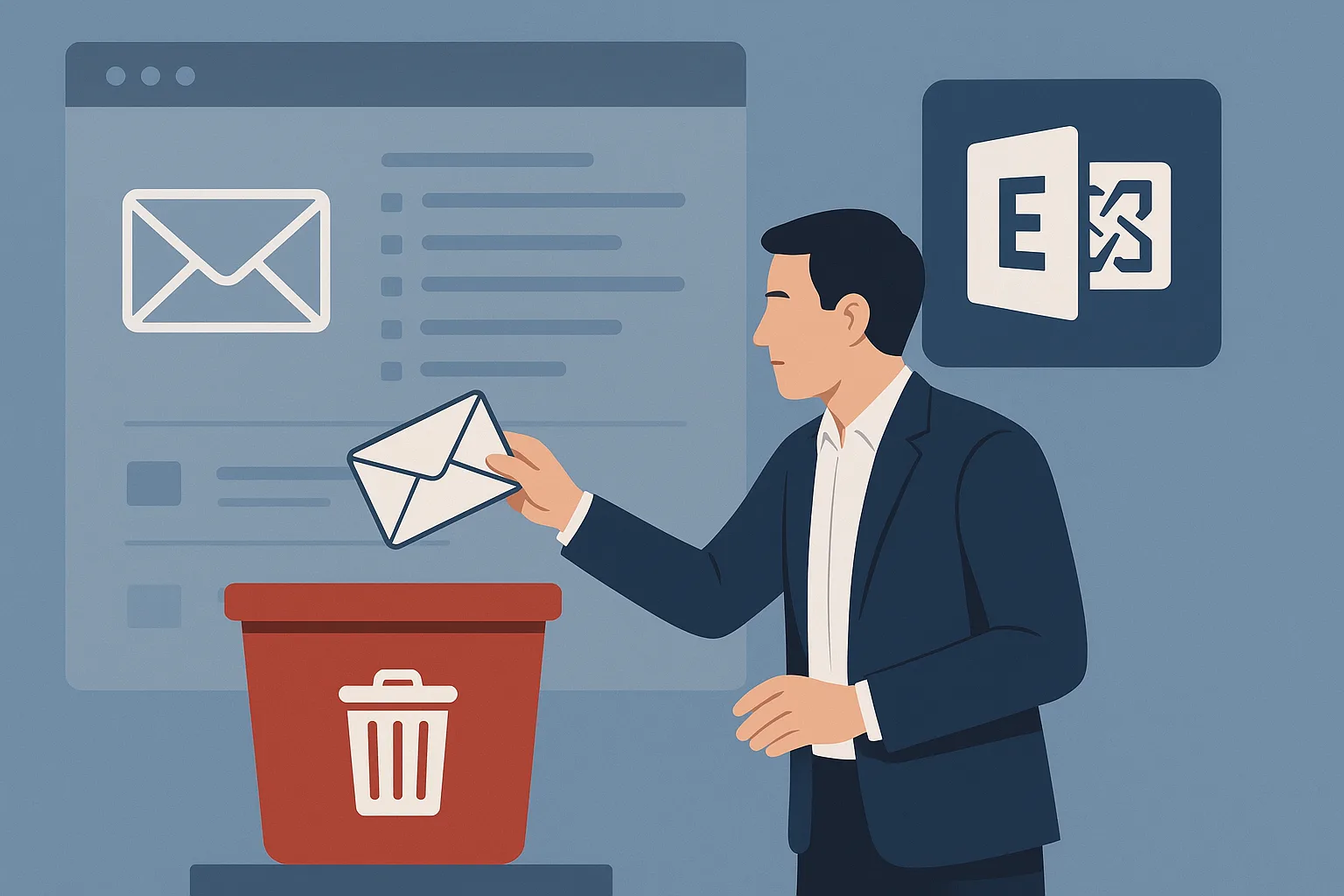Managing email systems isn’t just about uptime and connectivity—it’s also about ensuring security and compliance. One of the critical tasks for Exchange administrators is identifying and deleting dangerous or objectionable content from user mailboxes.
Whether you’re responding to phishing emails, malware threats, or inappropriate messages, Microsoft Exchange provides a robust set of tools to help administrators safely and effectively remove harmful content.
This guide will walk you through the steps and best practices for deleting objectionable content from Exchange mailboxes—covering both on-premises Exchange and Exchange Online environments.
Why Deleting Harmful Content is Critical
Emails remain one of the most common vectors for cyber threats. Messages containing malicious attachments, phishing links, or offensive content can jeopardize both organizational data and user safety.
Removing such content helps:
- Prevent malware propagation
- Limit exposure to phishing scams
- Ensure compliance with organizational policies and legal requirements
- Maintain a professional and safe workplace environment
Tools Used for Content Removal in Exchange
Depending on your Exchange environment, you have access to several tools and methods for deleting harmful emails:
1. Compliance Search (Exchange Online / Microsoft 365)
Compliance Search, available via Microsoft Purview, allows administrators to scan mailboxes for specific keywords, attachments, or other properties. It doesn’t delete items directly but is typically the first step in identifying problematic content.
2. Content Search and Purge (Security & Compliance Center)
Once content is identified, the “Search-Mailbox” cmdlet (for on-premises) or “New-ComplianceSearchAction” cmdlet (for cloud) is used to purge items directly from user mailboxes.
3. Exchange Management Shell (On-Premises Exchange)
Using PowerShell with Exchange Management Shell provides administrators powerful control to search and delete messages across mailboxes.
Step-by-Step: Deleting Dangerous Emails in Exchange Online
Here’s a basic workflow using Microsoft 365 PowerShell:
Step 1: Connect to Security & Compliance PowerShell
Connect-IPPSSession
Step 2: Create a Content Search
New-ComplianceSearch -Name "DeleteMalwareEmails" -ExchangeLocation all -ContentMatchQuery 'Subject:"Virus Alert"'
Step 3: Start the Search
Start-ComplianceSearch -Identity "DeleteMalwareEmails"
Step 4: Purge the Identified Items
Once the search is complete:
New-ComplianceSearchAction -SearchName "DeleteMalwareEmails" -Purge -PurgeType SoftDelete
Note: Use SoftDelete for recoverable deletion, or HardDelete for permanent removal.
Step-by-Step: Deleting Dangerous Emails in On-Premises Exchange
Step 1: Use Search-Mailbox Cmdlet
Search-Mailbox -Identity "[email protected]" -SearchQuery 'Subject:"Suspicious Email"' -DeleteContent
To search across all mailboxes:
Get-Mailbox -ResultSize Unlimited | Search-Mailbox -SearchQuery 'Subject:"Suspicious Email"' -DeleteContent
Ensure you run these commands with proper permissions and test the search queries before deletion.
Best Practices
- Audit Before You Delete: Always review search results before initiating a purge. Consider using
-LogOnlyoptions or exporting results for review. - Use SoftDelete Where Appropriate: Unless compliance requires it, avoid hard deletion to allow recovery if needed.
- Limit Search Scope: Narrow your queries to avoid false positives. Use filters like
From,Subject,Attachment, orReceiveddates. - Monitor and Report: Log all purge activities and ensure they align with your organization’s email retention and compliance policies.
Preventive Measures
To reduce the need for reactive deletion:
- Implement strong anti-phishing and anti-malware protections
- Regularly train users on identifying malicious or inappropriate content
- Use mail flow rules (transport rules) to quarantine or block harmful messages
- Enable Microsoft Defender for Office 365 for enhanced threat protection
Final Thoughts
Deleting dangerous or objectionable content from Exchange mailboxes is a necessary skill for any Exchange administrator. While the tools provided by Microsoft are powerful, they must be used with precision and care to avoid unintentional data loss or compliance issues.
Regular audits, smart preventive policies, and a clear response plan ensure your email environment remains secure, professional, and compliant.


